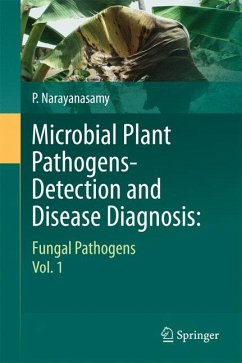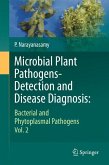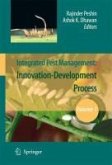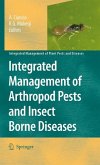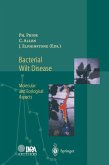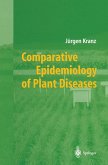Plants are infected by different microbial pathogens, of which fungal pathogens form the highly evolved and earliest recognized group. The morphological, biological, biochemical and physiological characteristics have been used for the detection, identification and differentiation of fungal pathogens up to species level. Pathogenicity on a set of differential host plant species or crop cultivars has been useful for the identification of physiologic races existing within a morphologic species/variety. As the techniques based on the above mentioned characteristics require long time and yield inconsistent results, the need for the development of techniques with greater accuracy, reliability, reproducibility and capable of providing the results rapidly was realized. Immunoassays have been shown to be effective in detecting several fungal pathogens present in plants, planting materials, soil, water and air. Development of monoclonal antibody technology has greatly enhanced the sensitivity and specificity of detection, identification and differentiation of fungal species and varieties/strains. Nucleic acid-based techniques involving hybridization of probes with complementary sequences of the target pathogen(s) or amplification of specific sequences of the target pathogen DNA/fragment have been demonstrated to be the most efficient among the diagnostic techniques currently available. This volume provides exhaustive information on various methods of detection of fungal pathogens and the diagnosis of the diseases caused by them based on extensive literature search that will be useful to the researchers, teachers and graduate students of different disciplines of biological sciences, in addition to the extension pathologists, personnel of plant quarantines and certification programs. Presentation of a large number of protocols is a unique feature of this volume to facilitate selection of appropriate techniques for different investigations.
Dieser Download kann aus rechtlichen Gründen nur mit Rechnungsadresse in A, B, BG, CY, CZ, D, DK, EW, E, FIN, F, GR, HR, H, IRL, I, LT, L, LR, M, NL, PL, P, R, S, SLO, SK ausgeliefert werden.
From the reviews:
"The first volume of the Microbial plant pathogens - Detection and disease diagnosis focuses on fungal pathogens. ... All chapters are summarized in the abstract, well referenced and focused on providing concerns of techniques and improvements of research. Therefore, if you are interested in the methods for detection and diagnosis, this is certainly a book you must have. The book should be available to every mycologist and students studying any aspect of plant pathology. Every library in the world should also have this book." (Dhanushka Udayanga and Dimuthu S. Manamgoda, Fungal Diversity, April, 2012)
"The first volume of the Microbial plant pathogens - Detection and disease diagnosis focuses on fungal pathogens. ... All chapters are summarized in the abstract, well referenced and focused on providing concerns of techniques and improvements of research. Therefore, if you are interested in the methods for detection and diagnosis, this is certainly a book you must have. The book should be available to every mycologist and students studying any aspect of plant pathology. Every library in the world should also have this book." (Dhanushka Udayanga and Dimuthu S. Manamgoda, Fungal Diversity, April, 2012)

